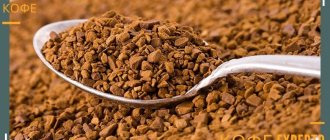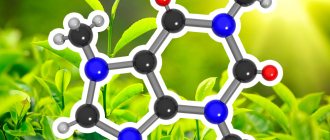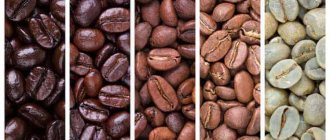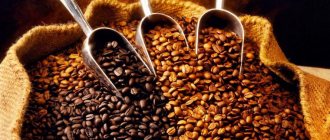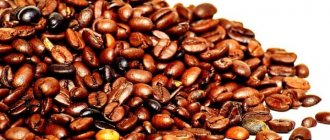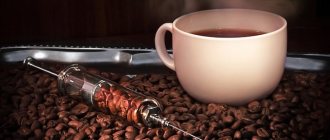Instant coffee is easy to prepare. To do this, you need to stir a spoonful of freeze-dried powder in a cup of hot water, and you will get coffee instantly. However, the question on everyone's mind is: how much caffeine is in this cup?
You will be surprised to know that although it appears concentrated, instant coffee has less caffeine.
A 360 ml (12 ounce) cup of instant coffee contains about 96 milligrams of caffeine. This is less than the 136ml you'd find in a cup of freshly ground coffee of the same volume.
How much caffeine is in instant coffee
According to the USDA (United States Department of Agriculture), each teaspoon (0.9 grams) of instant coffee contains 28.3 milligrams of caffeine.
A heaped teaspoon (the usual serving size for instant coffee) is about twice as much, 2 teaspoons of instant coffee for every 210 ml of water.
This means that if you are brewing a 360ml cup of coffee, you will need about 3.4 teaspoons of instant coffee. That's 96.22 milligrams of caffeine.
The FDA's recommended daily caffeine intake is below 400 milligrams. Which means you can safely drink four cups of instant coffee a day.
Instant coffee has less caffeine than regular coffee or espresso. This is a major benefit of instant coffee for those trying to reduce their caffeine intake. You can also choose a caffeine-free drink.
The exact level of caffeine depends on the beans used, but a 360 ml cup of plain coffee brewed from ground beans contains 136 milligrams of caffeine. The same size cup of instant coffee contains 70% more caffeine (96 milligrams).
A 1-ounce serving of espresso typically contains 64 milligrams of caffeine. If you drink a 12-ounce latte with two shots of espresso, you'll get 128 milligrams of caffeine. The same cup of instant coffee will have 25% less caffeine.
Converting this to ounces, instant coffee contains 7.9 mg of caffeine per ounce, compared to 11.3 mg per ounce for ground coffee and 64 mg per ounce for espresso.
That is, instant coffee contains slightly less caffeine per ounce than brewed coffee or espresso.
A 12-ounce cup of instant coffee contains the same amount of caffeine as an 8-ounce cup of brewed coffee, meaning you can drink a lot more instant coffee. And if you order a double latte instead of instant coffee, you'll drink about 1.3 times more caffeine.
What is the best water to coffee ratio for instant coffee?
The ideal ratio of instant coffee to water depends on your taste and how strong or mild you like your coffee. A good ratio is a heaping teaspoon of coffee per 210 ml of water. That's 3.4 teaspoons of instant coffee when brewing a 12-ounce cup.
Instant coffee and caffeine
If you're looking for a light caffeine fix, instant coffee may be your new favorite drink. It may not have as complex or rich a flavor as whole bean coffee or espresso, but it is much easier to prepare and contains about 30% less caffeine. A 12-ounce (360 ml) cup of instant coffee contains 96 milligrams of caffeine—about a quarter of the safe daily limit.
Coffee is a popular drink and the most common source of caffeine. The caffeine content of coffee can vary significantly depending on several factors, including the type, brewing method, and brand of coffee.
The Food and Drug Administration (FDA) estimates that an 8-ounce (240 ml) cup of coffee contains about 80–100 mg of caffeine.
Problems Caused by Caffeine Consumption
While science has proven the benefits of consuming caffeine, there have been many downsides to the substance. Before you start drinking more coffee, it's important to know about them.
Caffeine is addictive. Over time, your body will become accustomed to receiving a regular dose. If you suddenly stop drinking coffee, an imbalance will occur. Essentially, your body will forcefully replace the hormones destroyed by regular exposure to caffeine. This is where withdrawal syndrome occurs with fatigue and headaches.
Regular consumption of caffeine can impair the body's absorption of iron and also reduce levels of B vitamins. In extreme cases, people with low iron levels can become anemic. Regular consumption of caffeine will continue to affect the functioning of hormones and neurotransmitters.
Caffeine content in types of coffee
Different types of coffee contain different amounts of caffeine.
Coffee made from ground natural beans
This is brewing ground coffee beans in hot water. The mixture is placed on a filter (paper, metal or plastic), through which water is passed in different types of equipment: drip coffee maker, percolator or French press.
An 8-ounce (240 ml) cup of this coffee typically contains about 95 mg of caffeine.
Decaffeinated coffee
Despite its name, decaffeinated coffee still contains some amount of this alkaloid. For example, an 8 ounce (240 ml) cup contains about 2 mg of caffeine.
Cold brew coffee
To make iced coffee, manufacturers leave ground coffee in water at room temperature for 8 to 24 hours.
A 2022 study found that a 12-ounce (360 ml) cup of iced coffee can contain between 153 and 238 mg of caffeine.
Instant coffee
To prepare this type of coffee, you need to add hot water to the instant coffee powder or granules. Instant coffee usually contains less caffeine than freshly brewed coffee. A typical 8-ounce (240 ml) cup of regular instant coffee contains about 62 mg of caffeine.
Espresso
Espresso is a strong coffee drink that is brewed by passing hot water or steam through very finely ground coffee. To prepare espresso coffee, use a coffee machine or a geyser coffee maker (moka). Espresso serving sizes are typically much smaller than regular ground coffee due to its high caffeine content. One 30 ml shot of espresso contains approximately 63 mg of caffeine.
Caffeine content in popular coffee brands
Many manufacturers and chain cafes provide caffeine content in their products.
Dunkin' Donuts
Dunkin' Donuts is a popular coffee and donut retailer that offers a wide variety of caffeinated beverages.
According to Caffeine Informer, the average caffeine content per 14-ounce cup of some coffee drinks offered at Dunkin' Donuts is as follows:
- Ground coffee: 210 mg
- Decaffeinated coffee: 10 mg
- Americano: 249 mg
- Iced coffee: 260 mg
- Latte: 119 mg
- Espresso: 85 mg per serving.
Starbucks
Starbucks is one of the most famous coffee brands in the world. The company lists the caffeine content of its products on its online beverage menu.
The caffeine content of a tall cup (12 ounces) of some Starbucks drinks is as follows:
- Pike Place roast: 235 mg
- decaf Pike Place roast: 20 mg
- Iced coffee with cold foam: 155 mg
- Caramel Macchiato: 75 mg
- Cappuccino: 75 mg
What affects caffeine content?
Several factors influence the caffeine content of a cup of coffee.
One of the main factors is the type of coffee beans. There are many different types of coffee plants, and beans from different plants vary in caffeine content.
The most popular types of plants for the production of coffee beans are:
- Coffea arabica, which is commonly called Arabica.
- Coffea canephora, which most people call robusta.
According to a 2016 study, Robusta coffee beans typically contain about twice as much caffeine as Arabica beans.
The researchers found that Arabica beans contained 34.1–38.5 grams of caffeine per kilogram (kg) of dry coffee, while Robusta beans contained 68.6–81.6 grams of caffeine per kg of dry coffee.
Other factors that can affect the amount of caffeine in a cup of coffee are:
type of roasting; brewing method; the amount of ground coffee a person uses during the brewing process; serving size.
What dose is too much?
There is no exact answer to this question - a safe dose of caffeine depends on your health condition. Some people drink strong coffee all day long without any harmful consequences, while for others, just a single cup causes their blood pressure to rise, their sleep to be disturbed, headaches, and nerves. The nervousness caused by caffeine can be alleviated by the amino acid L-theanine, which is found in green tea leaves. Interestingly, similar symptoms are observed in people with caffeine withdrawal. They also yawn, complain of fatigue, runny nose, muscle stiffness, and find it difficult to concentrate. Unfortunately, caffeine cannot be considered a completely safe product.
Other sources of caffeine
While coffee is probably the most popular source of caffeine, many other foods and drinks also contain the chemical.
However, the FDA does not require manufacturers to list the amount of caffeine in packaged foods, beverages, or dietary supplements.
Below are some other common sources of caffeine:
Tea
Tea contains varying amounts of caffeine, but usually less than the same size cup of coffee. For example, an 8-ounce (240 ml) cup of green tea contains about 28 mg of caffeine, while the same serving size of black tea contains about 47 mg of caffeine.
Soft drinks
Soft drinks such as sodas and fruit drinks can sometimes also contain caffeine. For example, an average 12-ounce can of Coca-Cola contains about 33 mg of caffeine.
Energetic drinks
Energy drinks often contain very high amounts of caffeine and sugar. This caffeine can be synthetic or from natural sources such as guarana leaves. Their caffeine content varies significantly depending on the brand. The amount is typically between 40 and 250 mg per 8 ounces, according to the FDA. However, some brands of energy drinks can contain up to 316 mg of caffeine per 8 ounces.
Chocolate
Chocolate naturally contains caffeine, but the amount depends on the cocoa content of the chocolate. Darker chocolate usually contains more caffeine than lighter or milk chocolate.
For example, the caffeine content of a 1 ounce (30 mg) serving of chocolate is:
- 45–59 percent cocoa solids: 12 mg
- 60–69 percent cocoa solids: 24 mg
- 70–85 percent cocoa solids: 23 mg
Medicines
Some over-the-counter and prescription medications contain caffeine to relieve pain.
Should you reduce your caffeine intake?
I am not a doctor. However, if you are concerned that you are consuming too much caffeine during the day, consult your doctor. But even without this, you can understand everything yourself. If you're, say, drinking one or two potfuls of coffee every day, then you should definitely reduce your dose.
I understand that coffee is a very good drink. So why not drink it constantly throughout the day? As much as we don't want to believe it, too much of a good thing can be harmful.
Conclusion
When drinking coffee and other caffeinated drinks, most of us do not think about the consequences. Unless we obviously exceed the norm. For others, it's important to avoid or at least limit your daily caffeine intake. And it’s not that you should give up the pleasure of enjoying a cup of aromatic morning coffee every day.
Knowing and understanding how much caffeine is in your cup of coffee can help you plan your diet. This is important information for those who do not want to overdo it on caffeine and be able to drink a cup of coffee a little larger than yesterday.
Let everything be a pleasure!
Recommended daily dose of caffeine
The 2015–2020 Dietary Guidelines for Americans indicate that adults should consume no more than 400 mg of caffeine per day.
There are no set strict rules for children, but the American Academy of Pediatrics FDAT discourages children and adolescents from consuming caffeine.
The authors of a 2022 systematic review suggest that adolescents aged 12–18 years consume less than 100 mg of caffeine per day.
They also warn that caffeine may have stronger effects on children under 12 because they tend to weigh less. The authors conclude that young children can tolerate an average of 2.5 mg of caffeine per kg of body weight.
How to Consume Caffeine for Benefits Without Harm
If you enjoy caffeinated drinks but are wary of the negative effects, take note of the following information:
- Don't drink caffeinated drinks every day
This is a difficult task for those who are accustomed to a daily coffee ritual. But if you drink coffee every day, then limit yourself to at least one cup a day.
- Know your norm
If you like to drink coffee and other drinks containing caffeine, be careful not to overdo it. If you drink so much that you feel nervous, you are definitely over your limit. Or vice versa, if the effect of consuming caffeine does not occur, feel free to increase the dose.
- Find a caffeine alternative
Cocoa or raw chocolate contains a substance similar to caffeine. It has no effect on the nervous system. Instead, blood flow throughout the body is stimulated. The circulatory system delivers more nutrients to the brain. And you feel cheerful and energetic.
Caffeine is a natural substance found in tea and coffee, some of the most popular beverages in the United States. It does not have a bad reputation, but it is still addictive, like any stimulant. However, it does not cause the terrible side effects found with other stimulants. If you consume drinks containing caffeine wisely, its effects will only benefit the body.
It is important to know how much caffeine you drink every day with each cup of coffee. This is to ensure that you get only the benefits from caffeine, while minimizing the risk of developing any of the side effects we discussed above.
Remember, too much caffeine will harm you.


